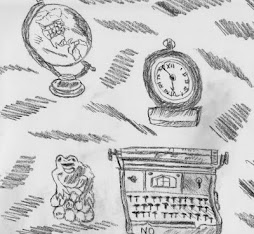When you are assigned APA papers, you should purchase the newest and most up-to-date writer's handbooks. People that write many APA papers need writer's reference guides for resource purposes. How should one start an academic paper?
Before a student begins to write an APA paper, they should first understand their instructor's guidelines. Every instructor has a different set of rules. Read the syllabus, ask the instructor, review the first graded paper, and ask questions.
Gather credible sources, read the literature, write down words that fit the area of expertise, and prepare a reference list. Use creative vocabulary to add flavor to your APA papers. Make sure these words are used in the right context so they don't interfere with the sentence structure.
Reading the literature first will help a student or respective writer get into a good writing rhythm. Writer's block delays the writing process because a person loses interest of the writing process and tries to find outlets that will take them away. Reading will help to alleviate writer's block, which in result improves the overall process.
Try to use quotes sparingly. Avoid abusing and adding quotes just for the purpose of taking up space. Write your APA papers the same exact way that you communicate with your family, friends, and in front of classmates. Some students have a sense of fear that people will judge their writing with the same criticism as society does in being negative. The revision process us useful for repairing any work that doesn't meet one's personal standards.
Incorporate good quotes that latch onto your thesis. Whatever you're writing about, support the content through sharing other author's ideas. Employ a variety of APA techniques. If you use the author's name in-text, include the date in paretheis after their name. If the sentence also contains a direct quote, place the page number (p. 1) after the sentence. Another way to quote is to start the sentence with an idea, then merge right into a quote.
Cite the sentence with the author's last name, year, and page number. If you paraphrase, include the author's last name and the year. Beginning with an author's name in-text, include the year afterwards in parenthesis. If you're not directly quoting, then just end the sentence like any other sentence.
Try to balance APA papers with less than 30% quoting versus roughly 70% personal perception. Some students overuse quoting; they essentially avoid incorporating their own ideas or even responding to the material. Quotes are like road signs that lead you to final destination.
Write a strong introduction that sets the APA paper into motion. Everything discussed in the introduction will be further expanded in the body of the paper. Make sure that each paragraph begins with an opening sentence that indicates what is to be discussed. End the paragraph with a good transition sentence, which then will carry on to the next paragraph - an open sentence that guides the new paragraph.
Preparing an outline keep APA papers organized and on topic. Once you work through the body, then close the APA paper with a strong conclusion that begins with reaffirming the thesis. Discuss briefly what was covered in the course of the APA paper. With writing many papers, the introduction usally imposes the greatest challenge. The body requires more organization than the introduction and the conclusion.
In essence, the conclusion serves as a recap to what was discussed in the course of the APA paper. Whenever I write any papers, I use this same strategy. Remember; the more you write, the more experienced you become, which makes the writing process effective each and every time. Good luck on writing your APA papers!
Monday, July 20, 2009
Subscribe to:
Post Comments (Atom)























No comments:
Post a Comment